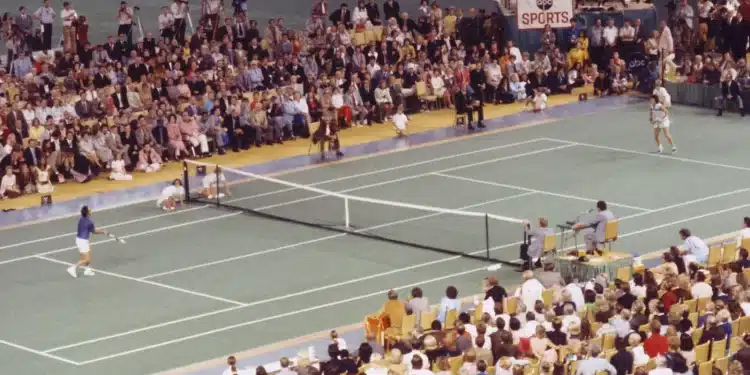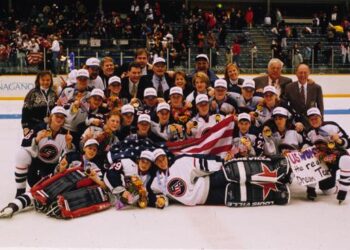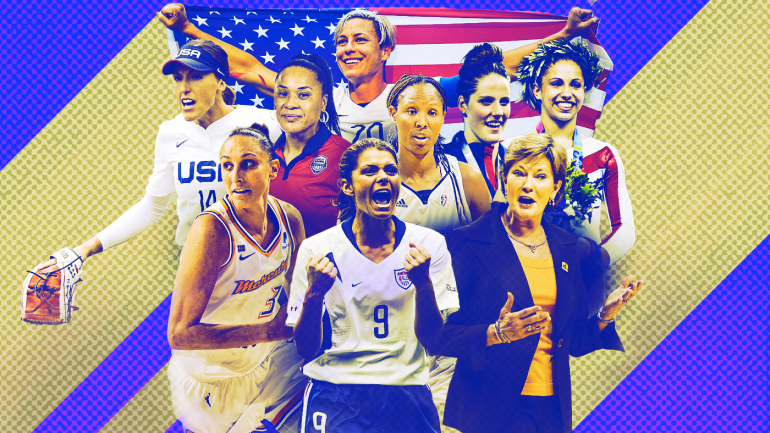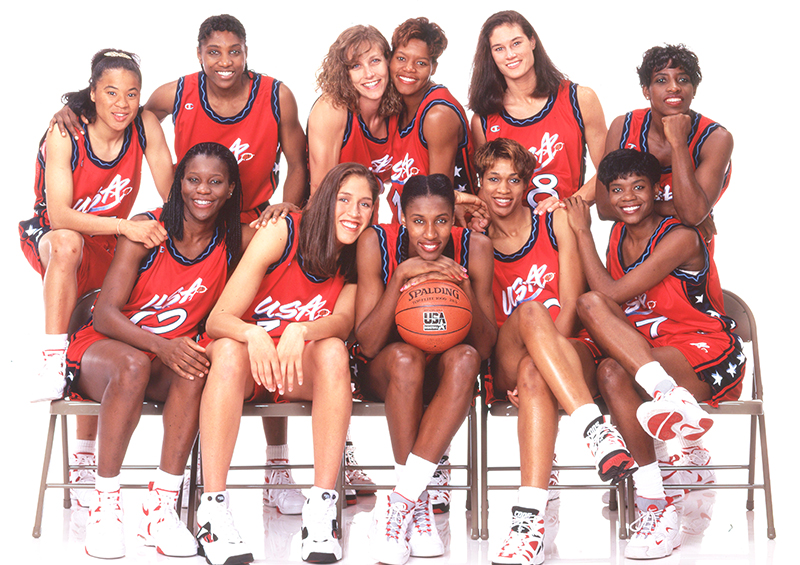By: Zachary Draves
On September 20th, 1973, the eyes of the world were laser focused on a tennis court inside the Houston Astrodome to witness what would merely be considered a gimmick in conventional times. But in early 1970s America, the Battle of the Sexes match between Billie Jean King and Bobby Riggs was of monumental proportions.
Against the backdrop of second wave feminism, where issues around reproductive freedom, equal pay, gender roles, and the participation of women and girls in sports were front and center, this was more than a tennis match.
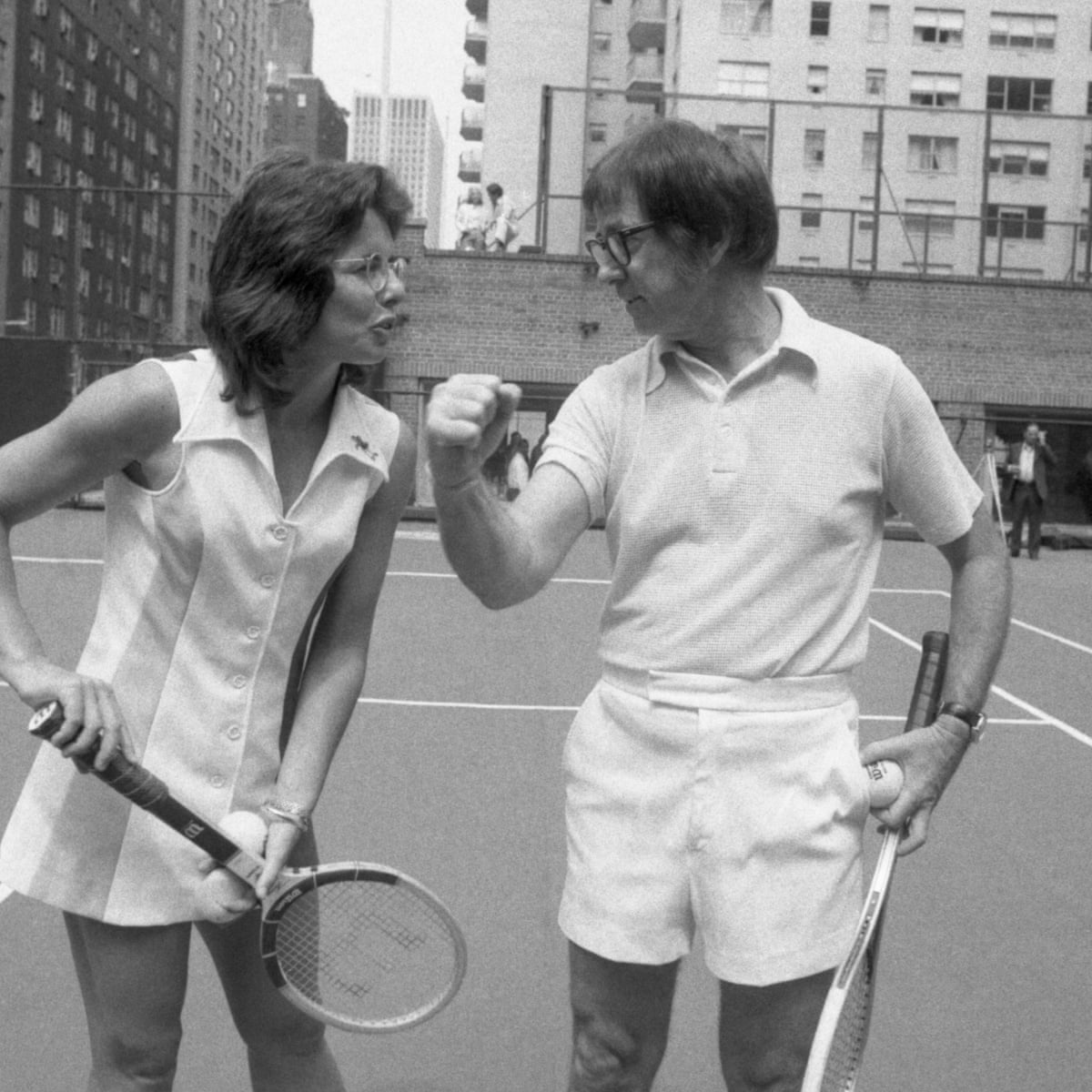
(Courtesy: Bettmann/Bettmann Archive)
There was a 29 year old King, the most prominent women’s tennis player and a staunch advocate for women’s rights at the height of the women’s liberation movement. Most notably, she was the chief crusader for equal prize money between women and men in the major tournaments.
In 1970, alongside eight other women, the “Original 9” signed a $1 contract to start the first ever women’s professional tennis tour. King then started the Women’s Tennis Association and became its first president.

(Courtesy: Bela Ugrin/Houston Post/Houston Racquet Club)
In 1973, she campaigned for equal prize money at the US Open and it came to fruition weeks before the Battle of the Sexes match.
On the court, she was dynamic, fast, and passionate, wore her heart on her sleeve, and came off winning her 5th Wimbleton singles title.
Riggs, a throwback star from the late 1930’s onto the 1940s and 1950s, was 55 years old at the time. He was definitely past his prime, but was still a competitive player known for his notorious hustling and gambling. The two time US Open winner who also swept Wimbledon in 1939 gleefully embraced the role of male chauvinist for those vehemently against women’s liberation.
He was brimming with confidence after he won the first Battle of the Sexes against the then best women’s tennis player in the world Margaret Court in straight sets, in what would later become known as the “Mother’s Day Massacre”. Initially, King had rejected Riggs’ offer to play because she was busy with the tour, so he chose to play Court.
After her defeat, she knew she had to play him and the hype went into overdrive.
In the leadup to the match, Riggs used the publicity machine to spew some old fashioned sexism by surrounding himself with scantily clad women wherever he went and promoting traditional gender roles. For the most part, he saw it as another hussle.
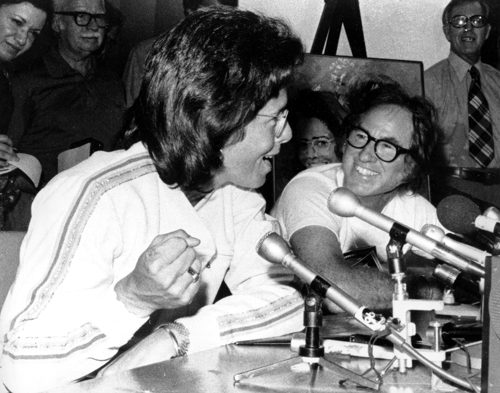
(Courtesy: Associated Press)
King saw it as a matter of virtual life and death. She was training harder than ever and understood that she was carrying the weight of the feminist movement on her shoulders.
The year prior, Title IX was signed into law, which stated that educational institutions that received federal funds had to provide equal opportunities for women and girls in extracurricular activities (sports) and college admissions.
So if she were to lose to Riggs, who knows what would have done for the future of women in sports and beyond.
Rosie Casals, one of the Original 9 who would serve as a commentator for ABC Sports alongside Howard Cosell doing the play by play, told Team NBS Media in a phone interview that going in she had confidence in King.
“I really believed in her,” she said. “I know her well enough. She was someone who could rise to the occasion in ways that someone like Margaret Court could not.”
The night of the match, a crowd of over 30,000 filled the Astrodome, still the largest crowd ever to watch a tennis match and over 50 million US viewers watched on television and 90 million worldwide, the biggest viewership for a tennis match.
No matter if they were in person or watching from home, the divisions were evident.
“It was a match of great importance,” said Casals. “It was a global affair. You would have men on one side and women on the other side and those who didn’t know about tennis would side with one or the other.”
Both made grand entrances. King was escorted by muscular members of the Rice University track team on a feather decorated chair as if she was Cleopatra being carried to her throne. Riggs came out in a rickshaw carried by models that were referred to as “Bobby’s Bosom Buddies”. He also wore a jacket that featured the logo of Sugar Daddy candy.
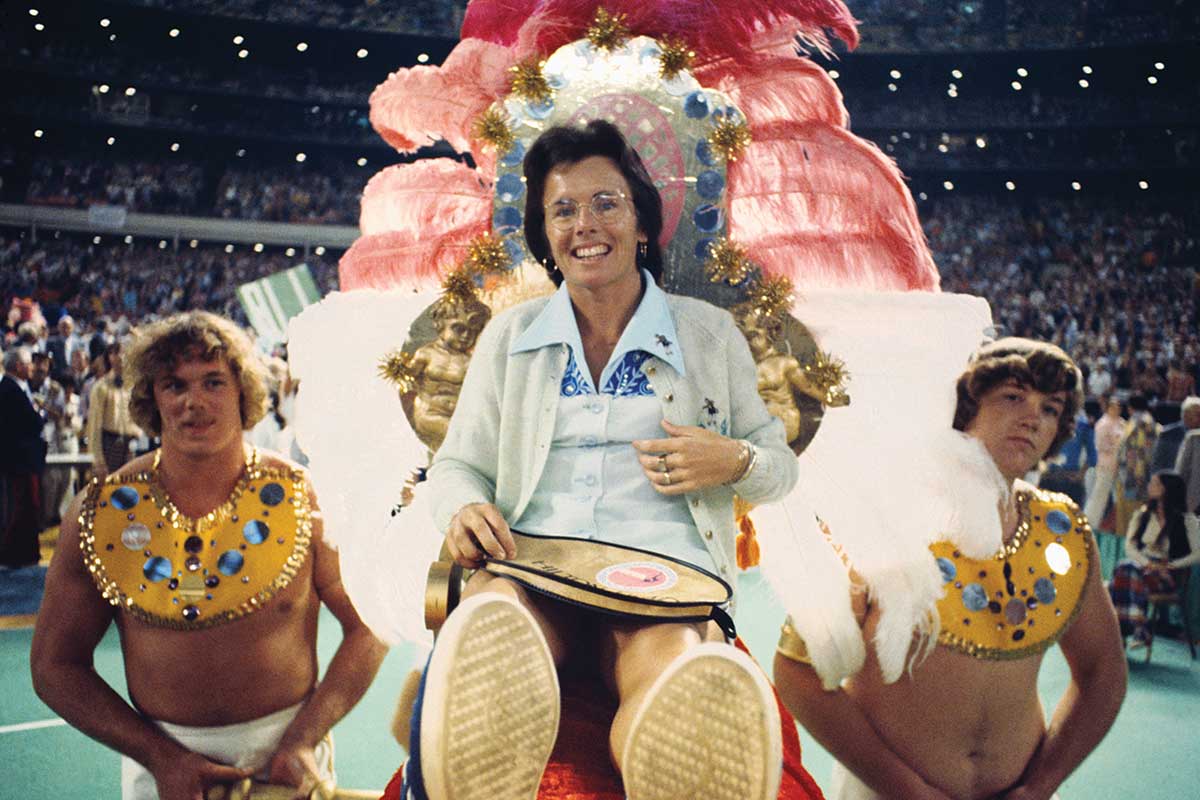
(Courtesy: Bettmann/Getty Images)

(Courtesy: Fairchild Archive/WWD/Penske Media/Getty Images)
With most writers and oddsmakers favoring Riggs, King’s strategy was simple. She was going to tire him out by making him run all over the court while she mostly stayed towards the baseline and handing him lobs and soft shots that he had to work for. In addition, she knew that Riggs hit a lot of lobs and so she ensured to hit as many overheads as possible. Riggs eventually transitioned toward a serve and volley game, but he quickly started running out of gas.

(Courtesy: Associated Press)
In the end, King had outplayed him and won all three sets 6-4, 6-3, 6-3 and captured the $100,000 grand prize.
/cdn.vox-cdn.com/uploads/chorus_image/image/66916661/51894739.jpg.0.jpg)
(Courtesy: Focus on Sport via Getty Images)
Casals reflected the mood she and many other women felt at the sight of King winning.
“We were very very jubilant,” she said. “We had more relief. I think for everybody that was involved with that match, the promotions of it, anybody that was around her and the battles we have fought.”
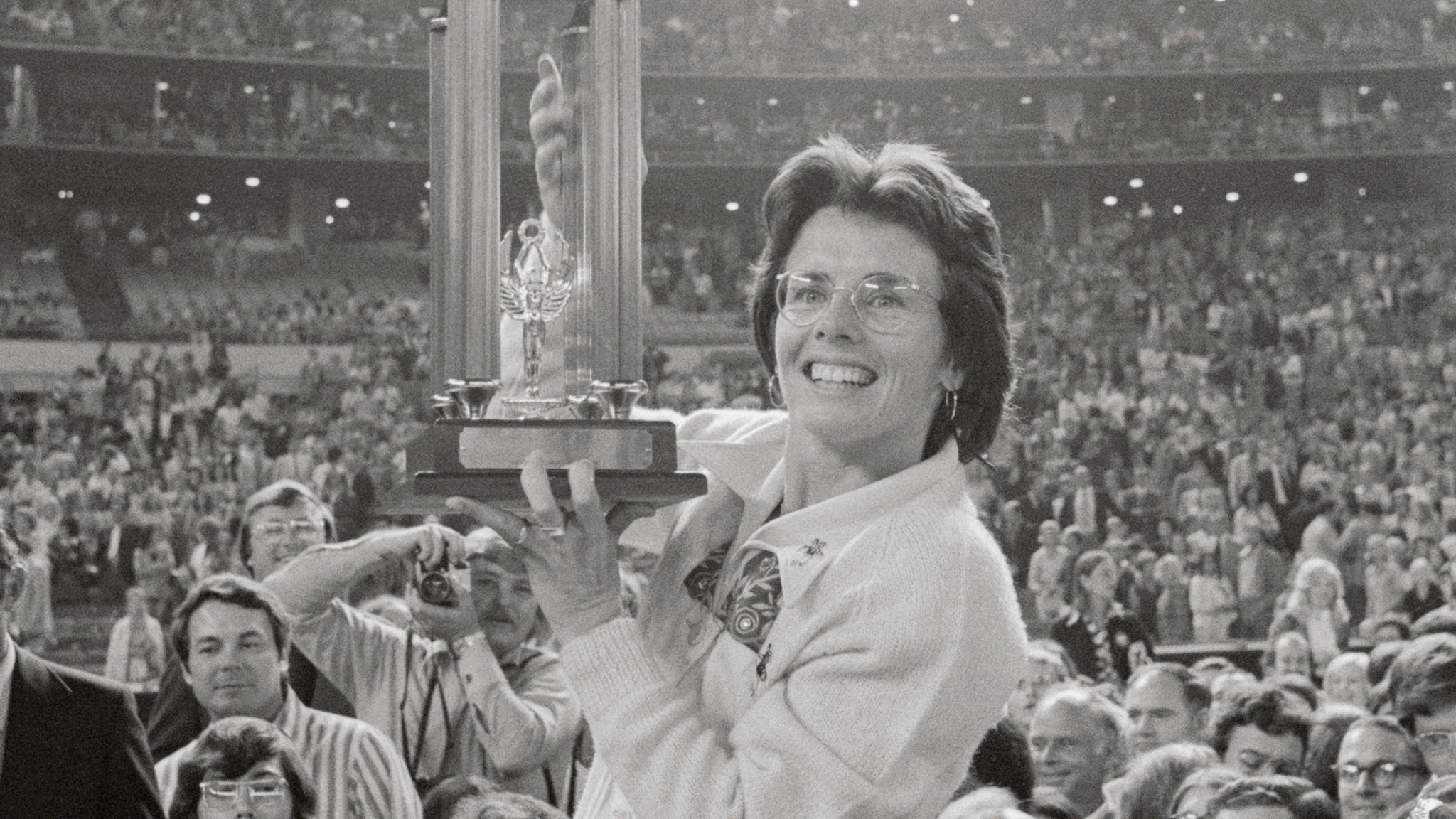
(Courtesy: Bettmann)
It was a long road to get to center court at the Astrodome and the feeling afterwards was that the times were certainly changing.
In the years after the match, King and Riggs remained in touch. In 1995, Riggs passed away from cancer at 77 and just prior to his death, he and King spoke about the significance of the match with Riggs saying “we really did make a difference” and with King offering her final words to him by saying “I love you”.
50 years later, the importance of that match and especially Kings’ pursuit of equality still resonates. At the US Open, Coco Gauff acknowledged her perseverance when receiving her earnings by saying “Thank you Billie for fighting for this.”
For Casals, the sight of Gauff paying homage to King and by extension the Original 9 gives her hope for the future of the game.
“It means alot,” she said. “She is the perfect person to move women forward and women in tennis forward. Having America number one. Her understanding of where women’s tennis has come from and I am hopeful that she will be influential with women and carry the legacy of Billie Jean and the Original Nine that came before her.”
The Battle of the Sexes still remains a prominent fixture in our historical rolodex and one that Casals holds near and dear as something that the younger generation can learn from.
“It is hard to believe it has been 50 years,” she said. “This younger generation doesn’t know how important this match was for women across the board. It really was a Battle of the Sexes that showed women can be somebody to be reckoned with. It gave women a feeling that they could achieve and could go out in a man’s world and succeed. It gave them the license to believe in wanting more for themselves and achieve it.”
If necessary look at a few lines from Helen Reddy’s anthem “I Am Woman” to encapsulate it all:
“Yes, I’ve paid the price
But look how much I’ve gained
If I have to, I can do anything
I am strong (strong)
I am invincible (invincible)
I am woman”


 NFL
NFL